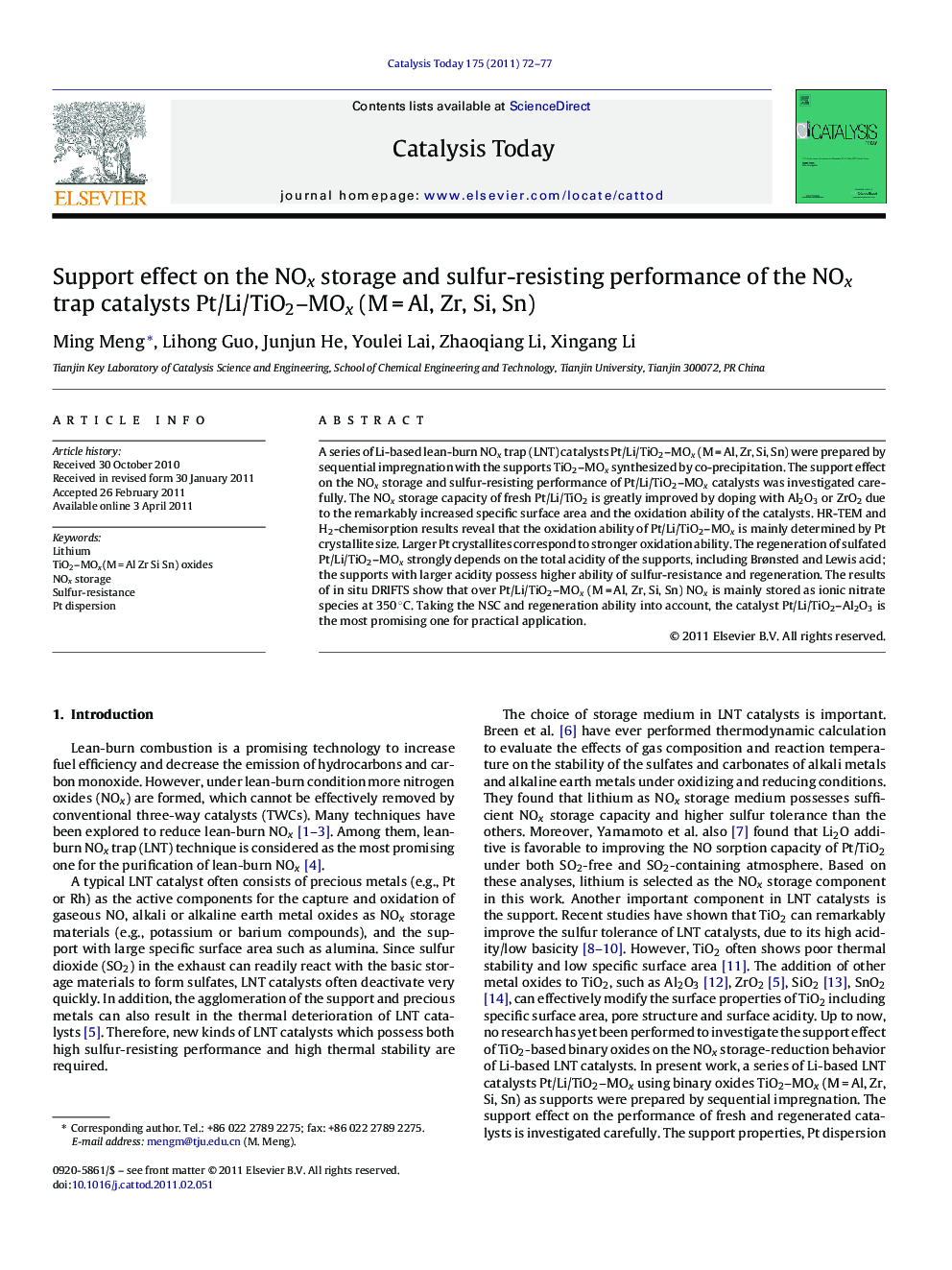| Article ID | Journal | Published Year | Pages | File Type |
|---|---|---|---|---|
| 55723 | Catalysis Today | 2011 | 6 Pages |
A series of Li-based lean-burn NOx trap (LNT) catalysts Pt/Li/TiO2–MOx (M = Al, Zr, Si, Sn) were prepared by sequential impregnation with the supports TiO2–MOx synthesized by co-precipitation. The support effect on the NOx storage and sulfur-resisting performance of Pt/Li/TiO2–MOx catalysts was investigated carefully. The NOx storage capacity of fresh Pt/Li/TiO2 is greatly improved by doping with Al2O3 or ZrO2 due to the remarkably increased specific surface area and the oxidation ability of the catalysts. HR-TEM and H2-chemisorption results reveal that the oxidation ability of Pt/Li/TiO2–MOx is mainly determined by Pt crystallite size. Larger Pt crystallites correspond to stronger oxidation ability. The regeneration of sulfated Pt/Li/TiO2–MOx strongly depends on the total acidity of the supports, including Brønsted and Lewis acid; the supports with larger acidity possess higher ability of sulfur-resistance and regeneration. The results of in situ DRIFTS show that over Pt/Li/TiO2–MOx (M = Al, Zr, Si, Sn) NOx is mainly stored as ionic nitrate species at 350 °C. Taking the NSC and regeneration ability into account, the catalyst Pt/Li/TiO2–Al2O3 is the most promising one for practical application.
Graphical abstractFigure optionsDownload full-size imageDownload high-quality image (144 K)Download as PowerPoint slideHighlights► The BET area and acidity of TiO2 are increased by the addition of MOx (M = Al/Zr/Si). ► The NOx storage capacity of Pt/Li/TiO2 is enhanced by MOx(M = Al/Zr/Si/Sn) addition. ► The ability of the catalysts for NO to NO2 oxidation is related to Pt particle size. ► The sulfur-resistance and regeneration of the catalysts depends on support acidity.
